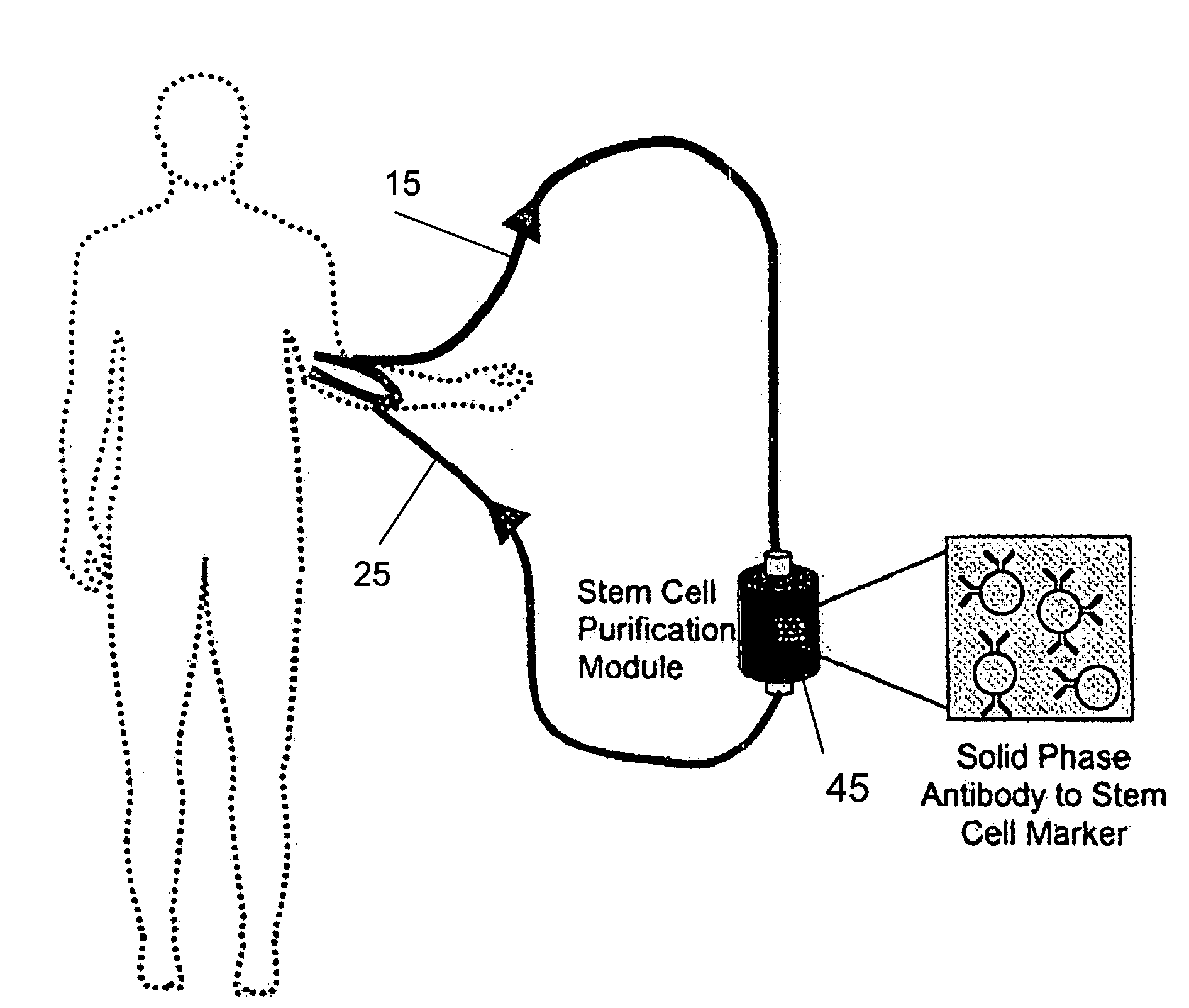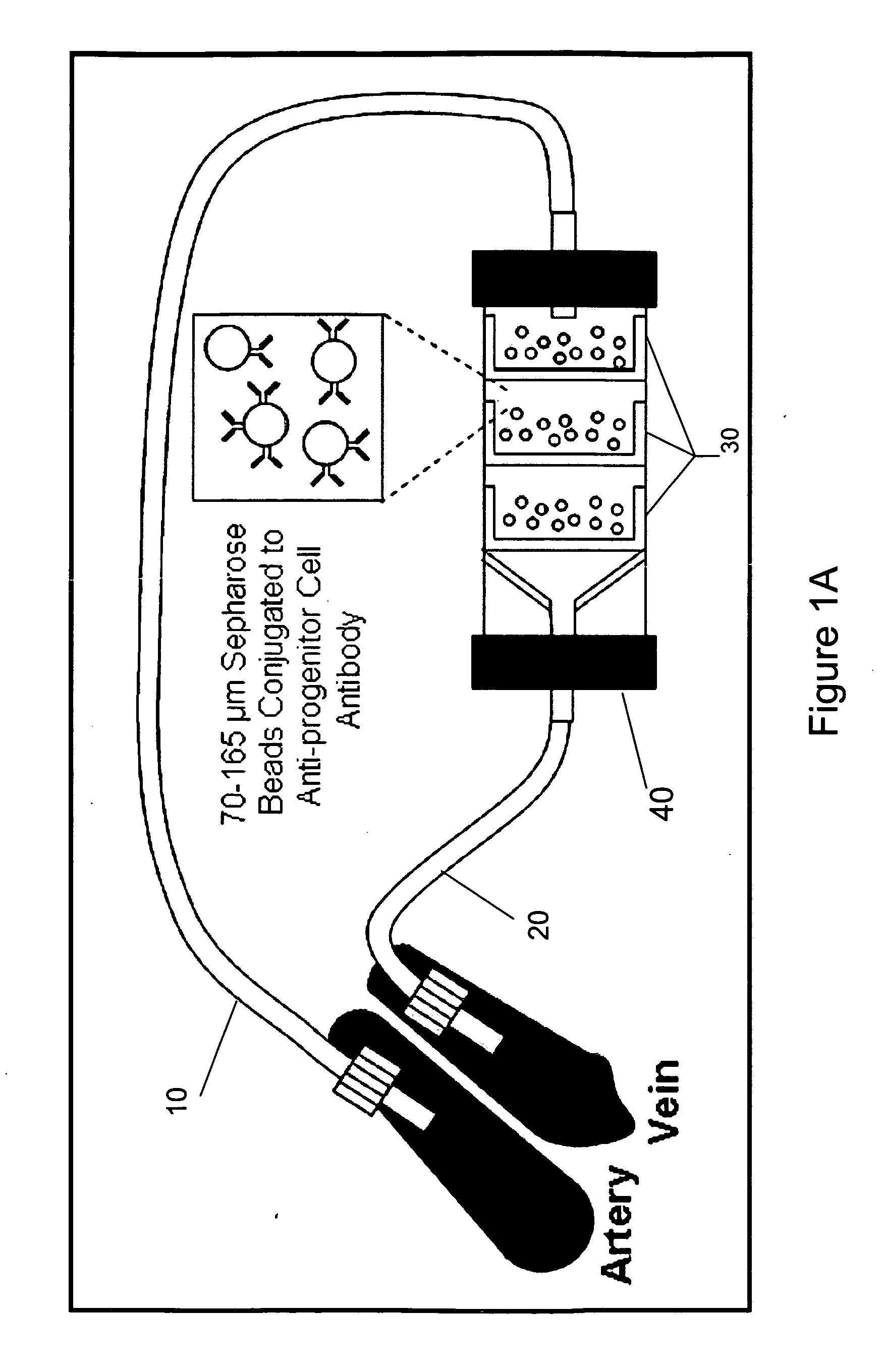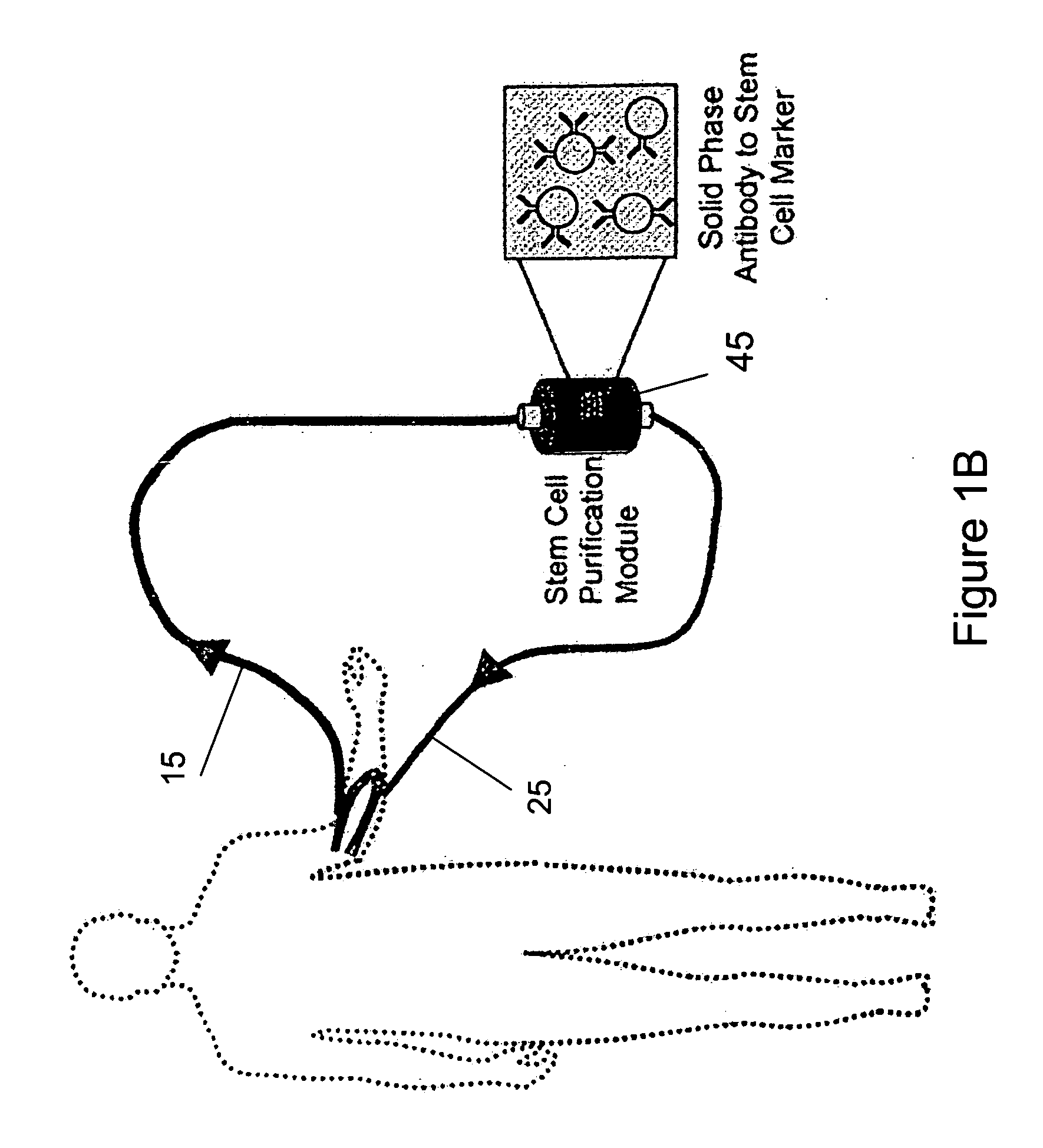Isolating and purifying cells for therapy
a cell therapy and cell technology, applied in the field of isolating cells for cell therapy, can solve the problems of limited number of cells present within the body, difficult clinical utilization, waste of blood, etc., and achieve the effects of prolonging life, facilitating replacement of specific leukocyte populations, and imparting palliative
- Summary
- Abstract
- Description
- Claims
- Application Information
AI Technical Summary
Benefits of technology
Problems solved by technology
Method used
Image
Examples
example 1
Methods and Materials
Animals:
[0109]Young female sheep between the ages of 4 and 12 months were purchased from RSI Farms (Mocksville, N.C.). All procedures were approved by the Wake Forest Animal Care and Use Committee. Sheep were monitored peri-operatively for any evidence of neurologic, cardiovascular, allergic, or pulmonary complications. Physiologic parameters included heart rate, blood pressure, end tidal carbon dioxide and pulse oximetry before, during and immediately following cycling of the ECA column or sham operated animals. Hematological monitoring included complete blood counts (CBC) with differential drawn immediately prior to column cycling and 24 hours post-operatively (n=8). In control animals blood work was performed immediately following vascular exposure and twenty four hours post-operatively.
Antibodies:
[0110]Anti-CD133 IgG1 monoclonal antibody was prepared from the AC133.1 hybridoma line (ATCC, Manassas, Va.) by in vitro antibody production using a gas permeable c...
example 2
Hematologic and Physiologic Stability During Column Use
[0118]The ECA columns consists of sepharose matrix with antibody based affinity towards the progenitor antigen CD133 retained by mesh filters (FIG. 1A). The extracorporeal circuit consists of an arterial cannula carrying blood to the column and the blood is then returned to the donor by a venous cannula to complete the circuit in anesthetized sheep after femoral or carotid vascular exposure. Given the expected turbulent environment of a device cycling high volumes of blood and the theoretical potential for allergic reaction or disturbed hematologic parameters, perioperative hematologic and physiologic parameters were assessed in sham operated control and column cycled animals. Complete blood counts with differential were assessed before and after cycling of the ECA column as well as in control animals. A comparison CBC, drawn 24 hours after the surgery, revealed a postoperative elevation of neutrophils and eosinophils that was s...
example 3
Characterization of Cells Recovered by the ECA Column
[0119]To demonstrate enrichment of CD133 positive cells recovered by the column, eluted cells were compared to buffy leukocytes for expression of the marker CD133 by fluorescent immunohistochemistry. Cells were cultured for 8 hours to allow for recovery of receptor expression and stained by FITC labeled anti-CD133 antibody and counterstained with DAPI. Comparable cell densities were stained with the DAPI nuclear counterstain and while buffy coat derived cells exhibited only a rare positive staining cell, ECA column recovered cells demonstrated a predominance of CD133 positive cells. In addition, relative to the entire leukocyte population of peripheral blood (shaded curve), cells extracted by the CD133 purification cartridge (solid line) demonstrated substantially higher expression of CD133 (FIG. 4A) and CD34 (FIG. 4B).
PUM
| Property | Measurement | Unit |
|---|---|---|
| diameter | aaaaa | aaaaa |
| pressures | aaaaa | aaaaa |
| pH | aaaaa | aaaaa |
Abstract
Description
Claims
Application Information
 Login to View More
Login to View More - R&D
- Intellectual Property
- Life Sciences
- Materials
- Tech Scout
- Unparalleled Data Quality
- Higher Quality Content
- 60% Fewer Hallucinations
Browse by: Latest US Patents, China's latest patents, Technical Efficacy Thesaurus, Application Domain, Technology Topic, Popular Technical Reports.
© 2025 PatSnap. All rights reserved.Legal|Privacy policy|Modern Slavery Act Transparency Statement|Sitemap|About US| Contact US: help@patsnap.com



